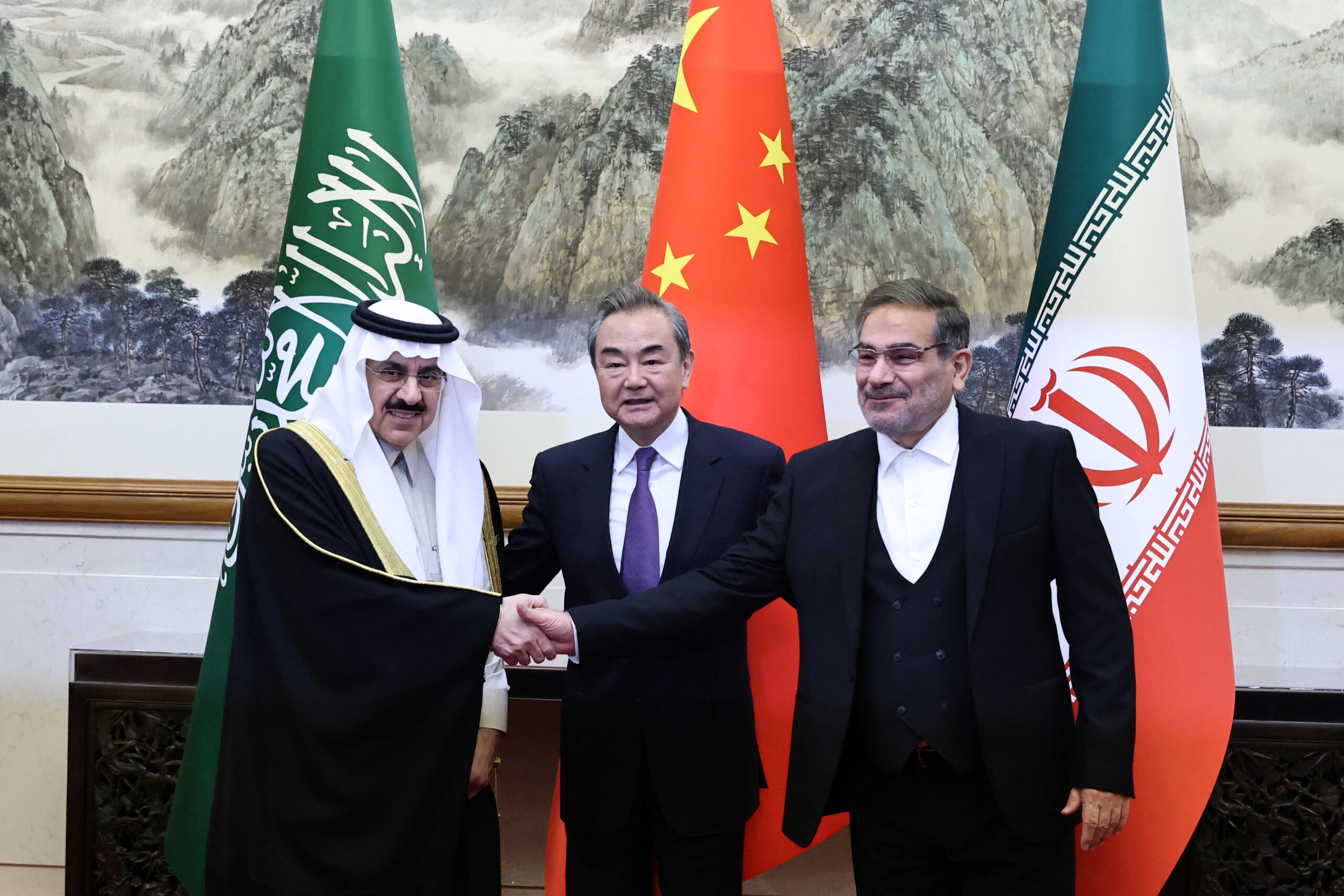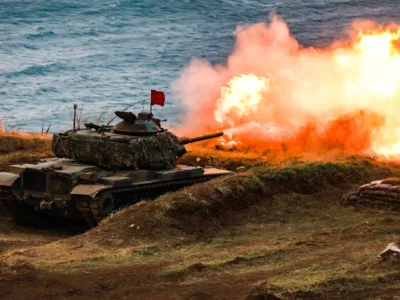Take China’s Role as a “Peacemaker” Seriously, not Literally
Washington has a lot to gain — and little to lose — by challenging Beijing to make good on its diplomatic ambitions
China’s diplomats have been hard at work this spring, helping to broker a normalization deal between Saudi Arabia and Iran and orchestrating President Xi Jinping’s Moscow summit with Vladimir Putin to celebrate the friendship between their two countries. Beijing is apparently eager to portray itself as a force for peace in the world, but its recent flurry of diplomacy is also consonant with another aim: bolstering China’s influence and securing stability and peace where it suits their national interests.
Washington need not buy into Beijing’s rhetoric about its peacemaking ambitions to recognize — and take seriously — China’s considerable power to shape world events, particularly when it comes to the behavior of adversaries like Russia and Iran, whom the United States has seemingly lost the ability (or will) to engage, or vice versa.
Rather than reflexively fighting China’s rise in the diplomatic arena, Washington should challenge Xi Jinping to make good on China’s apparent ambitions toward diplomatic leadership and use its strengthened position in a multipolar world to help advance Washington and Beijing’s mutual interest in stability in the Middle East and peace in Ukraine.
Forging limited cooperation between the United States and China at a moment of unprecedented enmity and suspicion between the two nations requires first recognizing the possibilities (and limits) of Beijing’s current approach.
The deal between Saudi Arabia and Iran appears more the fruit of Tehran and Riyadh’s desire to cement China’s neutral position in their rivalry rather than Beijing’s diplomatic finesse.1 Let’s recall that Riyadh and Tehran often go through phases of confrontation and accommodation; the tensions of the past six years or so, fueled by a proxy war in Yemen, meddling in each other’s affairs, and the ill–fated JCPOA had already given way to renewed, substantive talks and a ceasefire in Yemen. Iraq and Oman prepared the ground for normalization, but it was China that managed to bring the matter across the goal line by acting as guarantor — meaning, if Riyadh or Tehran cheats on the agreement, they will not only undermine their relations with each other, but also with Beijing.2
The pomp and circumstance of Xi’s visit to Russia the week following the agreement were superimposed on a mind–numbing joint document that registered all the policy initiatives, attitudes, and proclivities of the two governments, but put virtually nothing in writing about the ongoing war in Ukraine. Missing was last year’s grandiose language about Russia and China’s partnership “with no limits.”3 U.S. officials have noted China’s conspicuous lack of military assistance for Russia’s war effort, while other observers have highlighted the tepid nature of its rhetorical support.4
What is the United States supposed to make of these twin theatrical diplomatic displays?
In the case of Saudi Arabia and Iran, China appears to have borrowed from Henry Kissinger’s fabled playbook, leveraging its relations with both sides in a regional conflict to box out a strategic competitor. The United States, back in 1973, had good relations with warring parties Israel and Egypt, leaving no diplomatic role for the Soviet Union to play — and Moscow never got back in the game. The lesson: to be relevant, the United States needs to have some sort of clout in Tehran.
A joint U.S.-China diplomatic effort to stabilize the Persian Gulf region, which is a clear mutual interest, would carve out a space for cooperation in a relationship otherwise burdened by deep mistrust.
We don’t need to spell out the shopworn narrative of grievances and missed opportunities since the Islamic revolution swept the Shah from power to recognize that Washington and Tehran will remain worlds apart for the foreseeable future. There is, however, an opening, if an uncertain one. The United States could consult with China on how best to consolidate the rapprochement between Iran and the Arab states of the Persian Gulf, help revive a revised JCPOA or at a minimum find an informal agreement to ensure that neither side escalates the situation further, and put in place rules of the road for Iranian–supported militias in Syria and in Iraq, where China is a significant investor.
The United States would hardly be the supplicant in this arrangement; despite the current messiness of U.S–Saudi relations, the two countries are still integrated in a host of ways, while Saudi Arabi’s mercurial de facto leader, Crown Prince Mohammed bin Salman (MBS), has linked his outreach to Beijing with renewed interest in a U.S. security guarantee.5 A joint U.S.-China diplomatic effort to stabilize the Persian Gulf region, which is a clear mutual interest, would carve out a space for cooperation in a relationship otherwise burdened by deep mistrust.
A parallel approach on the war in Ukraine could also bear fruit. The Chinese have advanced the possibility of a ceasefire, which would halt the conflict’s tremendous human suffering. Xi himself has reached out to Zelensky and refrained from offering meaningful military support for Russian operations.6 In the best case, a ceasefire would provide an opportunity for the disengagement of forces, demilitarization of the Donbas, and negotiations leading to the withdrawal of Russian forces. Russians have made only modest gains in their long–running offensive, failed in their effort to compel Ukraine to quit by destroying its energy infrastructure, suffered tremendous losses, and received no significant military aid from their allies. Russia will soon face a serious Ukrainian counteroffensive, enabled by massive transfers of modern weapons and munitions from the West.
Depending on how the conflict unfolds over the summer, Putin might find a ceasefire to be an attractive option — but he will look to China to broker it. The onus, in this event, will be on the United States to secure Ukrainian cooperation. Washington is well positioned to open a channel to Beijing so that the two countries can synchronize ceasefire efforts when the time is ripe. But even if the United States and Ukraine reject a ceasefire in the near to medium term, it will become necessary at some point. As Fred Ikle, the great diplomat and international relations theorist, observed: all wars must end.7 There are still benefits to starting talks and engaging China in the interim, with the aim of slowing the consolidation of the Beijing–Moscow axis. Countries often talk and fight simultaneously. It makes little sense to deprive the Ukrainians and the United States of this crucial tool of statecraft.
It doesn’t pay to bemoan what appear to be Chinese diplomatic successes purportedly won at U.S. expense. The United States should engage with China, hold their feet to the fire on their claimed objectives, and where possible combine efforts to secure mutual interests. Given the dire state of Sino-American relations — with Director of National Intelligence Avril Haines characterizing China as the main strategic threat to the United States — this sort of cooperation may prove elusive.8 Indeed, it could be torpedoed by domestic politics, divisions within the U.S. government, or by Beijing. But Washington should not be deterred from trying. Diplomacy is about probing an adversary’s intentions and testing pathways toward mutual accommodation. It is an attribute of shrewd statecraft, not strategic weakness.
The United States should engage with China, hold their feet to the fire on their claimed objectives, and where possible combine efforts to secure mutual interests.
The United States has long cherished the role of global peacemaker, but rarely occupied it with much success. China’s ambitions may wound U.S. geopolitical pride, but that’s no reason to resist exploiting them to America’s own advantage in advancing stability in the Middle East and peace in Ukraine.
Citations
Trita Parsi and Khalid Aljabri, “How China Became a Peacemaker in the Middle East, Foreign Affairs, March 15, 2023, https://www.foreignaffairs.com/china-became-peacemaker-middle-east. ↩
Trita Parsi, “Lessons from China’s role in Middle East diplomacy,” May 2, 2023, https://www.straitstimes.com/opinion/lessons-from-china-s-role-in-middle-east-diplomacy. ↩
Lily McElwee, Maria Snegovaya, Alexandra Chopenko, and Tina Dolbaia, “Xi Goes to Moscow: A Marriage of Inconvenience?” Center for International and Strategic Studies, March 28, 2023, https://www.csis.org/analysis/xi-goes-moscow-marriage-inconvenience ↩
Sam Fossum, “China has not provided extensive assistance to Russia,” CNN Business, April 7, 2023, https://www.cnn.com/2023/04/07/intl_business/china-russia-not-provided-assistance/index.html; Jake Werner, “Biden Doesn’t Need to Keep Pushing Xi and Putin Closer Together,” The Nation, March 22, 2023. https://www.thenation.com/article/world/biden-doesnt-need-to-keep-pushing-xi-and-putin-closer/ ↩
Michael Crowley, Vivian Nereim, and Patrick Kingsley, “Saudi Arabia Offers Its Price to Normalize Relations With Israel,” The New York Times, March 11, 2023, https://www.nytimes.com/2023/03/09/us/politics/saudi-arabia-israel-united-states.html. ↩
Stuart Lau and Veronika Melkozerova, “Xi Tells Zelenskyy: China won’t add ‘fuel to the fire’ in Ukraine,” Politico, April 26, 2023, https://www.politico.eu/article/china-xi-jinping-volodymyr-zelenskyy-ukraine-finally-called-zelenskyy-first-since-russia-waged-war/. ↩
Fred Charles Ikle, Every War Must End (New York: Columbia University Press, 2005). ↩
Laura Kelly, “China ranks atop worldwide threats, U.S. intelligence chief tells lawmakers,” The Hill, March 8, 2023, https://thehill.com/policy/national-security/3890382-china-ranks-atop-worldwide-threats-us-intelligence-chiefs-tell-lawmakers/. ↩





